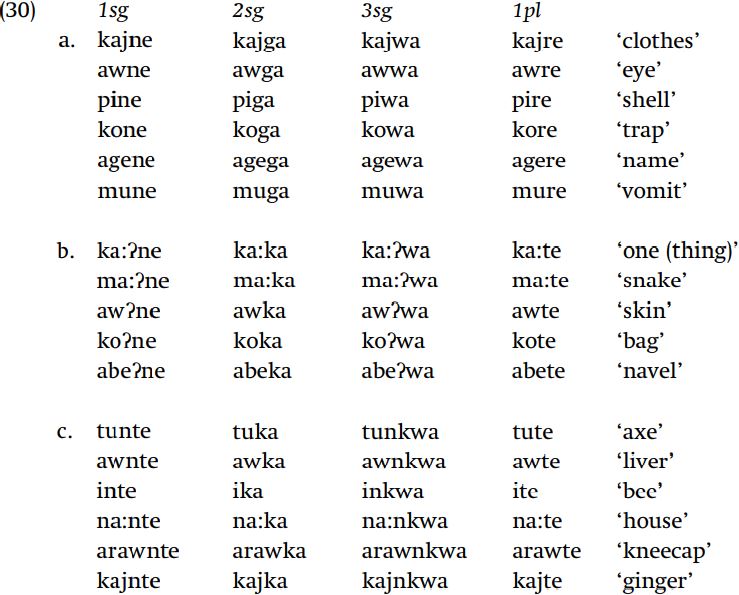

Grammar


Tenses


Present

Present Simple

Present Continuous

Present Perfect

Present Perfect Continuous


Past

Past Simple

Past Continuous

Past Perfect

Past Perfect Continuous


Future

Future Simple

Future Continuous

Future Perfect

Future Perfect Continuous


Parts Of Speech


Nouns

Countable and uncountable nouns

Verbal nouns

Singular and Plural nouns

Proper nouns

Nouns gender

Nouns definition

Concrete nouns

Abstract nouns

Common nouns

Collective nouns

Definition Of Nouns

Animate and Inanimate nouns

Nouns


Verbs

Stative and dynamic verbs

Finite and nonfinite verbs

To be verbs

Transitive and intransitive verbs

Auxiliary verbs

Modal verbs

Regular and irregular verbs

Action verbs

Verbs


Adverbs

Relative adverbs

Interrogative adverbs

Adverbs of time

Adverbs of place

Adverbs of reason

Adverbs of quantity

Adverbs of manner

Adverbs of frequency

Adverbs of affirmation

Adverbs


Adjectives

Quantitative adjective

Proper adjective

Possessive adjective

Numeral adjective

Interrogative adjective

Distributive adjective

Descriptive adjective

Demonstrative adjective


Pronouns

Subject pronoun

Relative pronoun

Reflexive pronoun

Reciprocal pronoun

Possessive pronoun

Personal pronoun

Interrogative pronoun

Indefinite pronoun

Emphatic pronoun

Distributive pronoun

Demonstrative pronoun

Pronouns


Pre Position


Preposition by function

Time preposition

Reason preposition

Possession preposition

Place preposition

Phrases preposition

Origin preposition

Measure preposition

Direction preposition

Contrast preposition

Agent preposition


Preposition by construction

Simple preposition

Phrase preposition

Double preposition

Compound preposition

prepositions


Conjunctions

Subordinating conjunction

Correlative conjunction

Coordinating conjunction

Conjunctive adverbs

conjunctions


Interjections

Express calling interjection

Phrases

Sentences


Grammar Rules

Passive and Active

Preference

Requests and offers

wishes

Be used to

Some and any

Could have done

Describing people

Giving advices

Possession

Comparative and superlative

Giving Reason

Making Suggestions

Apologizing

Forming questions

Since and for

Directions

Obligation

Adverbials

invitation

Articles

Imaginary condition

Zero conditional

First conditional

Second conditional

Third conditional

Reported speech

Demonstratives

Determiners


Linguistics

Phonetics

Phonology

Linguistics fields

Syntax

Morphology

Semantics

pragmatics

History

Writing

Grammar

Phonetics and Phonology

Semiotics


Reading Comprehension

Elementary

Intermediate

Advanced


Teaching Methods

Teaching Strategies

Assessment
Morphological analysis Fore
المؤلف:
David Odden
المصدر:
Introducing Phonology
الجزء والصفحة:
164-6
2-4-2022
1825
Morphological analysis
Separating roots from suffixes in this language is difficult, since it is not obvious whether certain segments are part of the root and delete in one context, or are part of the suffix and delete in another context – or, are they epenthetic? Thus the root for ‘axe’ might be /tun/ or it might be /tu/ – if the former, some rule must delete /n/ in [tuka] ‘your sg axe’, if the latter, we would conclude that the 1sg and 3sg suffixes are /-nte, -nkwa/. If we assume the suffixes /-nte, -nkwa/, then we would need to explain why they appear as [-ne, -wa] after ‘clothes’ and ‘one.’ It almost seems that in order to get the answer to one question, you have to know the answer to all other questions.
The first step to solving this problem is to determine how many significant behavioral categories there are. By comparing the forms of ‘clothes’ and ‘eye,’ we can conclude that these two roots are identical in terms of behavior: the suffixes have the same shape after these two roots, and the following inflectional material is the same across the roots. We can also see that there are major differences in the form of the suffixes between‘eye’ and‘liver,’ although the roots look very similar and in half of the forms are exactly the same.

The data of (28) can be reordered by roots, according to the surface patterns of the apparent personal suffixes, and this reveals that there are three behavioral classes of roots.

In (a), the invariance of the portion that precedes ne in the 1sg, ga in the 2sg, wa in the 3sg, and re in the 1pl suggests that these roots are /kaj, aw, pi, ko, age, mu/, further leading to the conclusion that the suffixes are /-ne/ ‘1sg’, /-ga/ ‘2sg’, /-wa/ ‘3sg’, /-re/ ‘1pl’, or some phonologically similar form. Having identified the root–suffix boundary, we can now proceed with the phonological analysis of underlying forms and rules.
 الاكثر قراءة في Morphology
الاكثر قراءة في Morphology
 اخر الاخبار
اخر الاخبار
اخبار العتبة العباسية المقدسة

الآخبار الصحية















 قسم الشؤون الفكرية يصدر كتاباً يوثق تاريخ السدانة في العتبة العباسية المقدسة
قسم الشؤون الفكرية يصدر كتاباً يوثق تاريخ السدانة في العتبة العباسية المقدسة "المهمة".. إصدار قصصي يوثّق القصص الفائزة في مسابقة فتوى الدفاع المقدسة للقصة القصيرة
"المهمة".. إصدار قصصي يوثّق القصص الفائزة في مسابقة فتوى الدفاع المقدسة للقصة القصيرة (نوافذ).. إصدار أدبي يوثق القصص الفائزة في مسابقة الإمام العسكري (عليه السلام)
(نوافذ).. إصدار أدبي يوثق القصص الفائزة في مسابقة الإمام العسكري (عليه السلام)


















